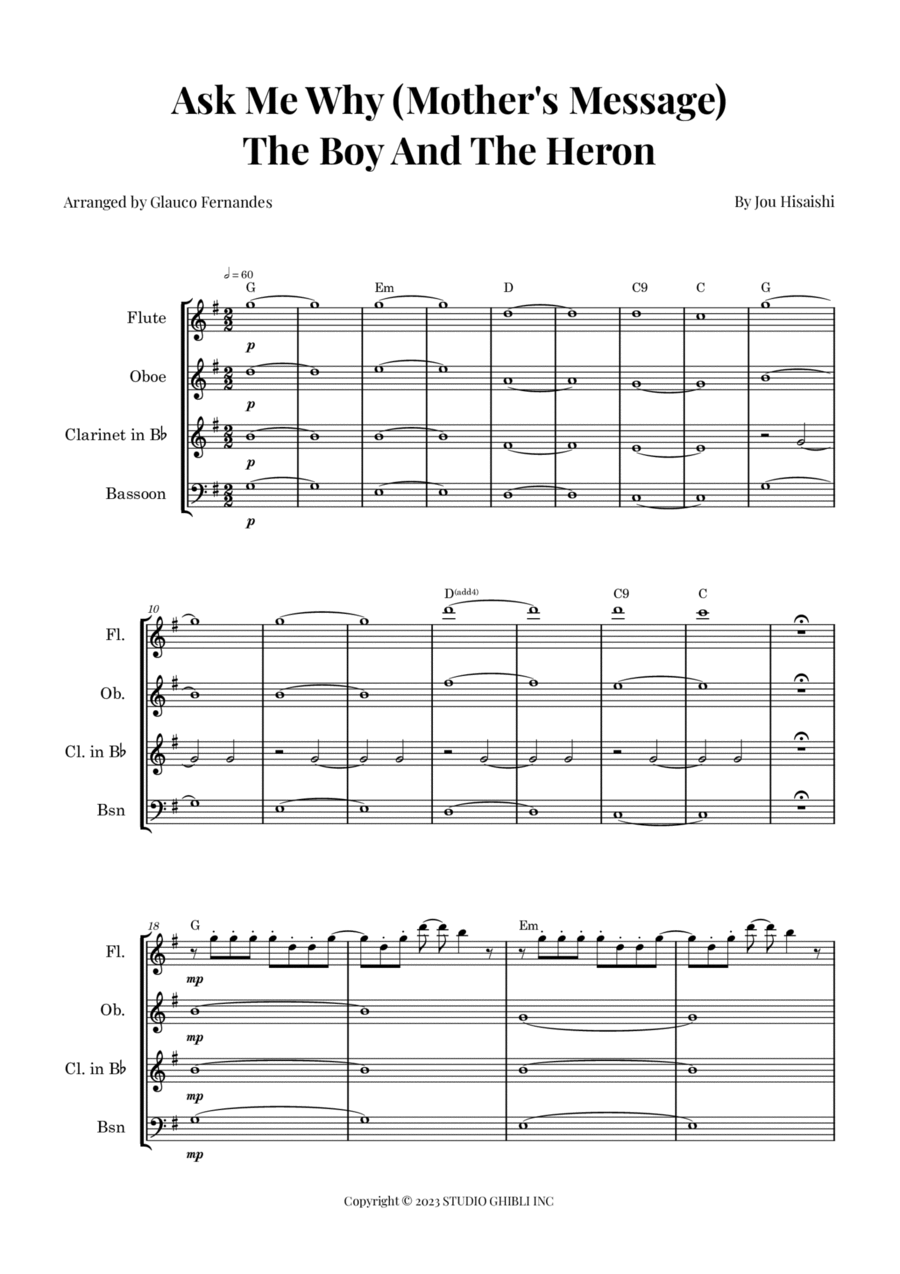Woodwind Ensemble,Woodwind Quartet Bassoon,Clarinet,Flute,Oboe - Level 2 - Digital Download SKU: A0.1416439 By Joe Hisaishi. By Jou Hisaishi. Arranged by Glauco Fernandes. Chamber,Film/TV. 8 pages. Glauco Fernandes #998119. Published by Glauco Fernandes (A0.1416439). Discover the enchanting beauty of Ask Me Why (Mother's Message), the captivating soundtrack from Hayao Miyazaki's The Boy and The Heron, an animated masterpiece that has won the hearts of the world and the Oscar for Best Animation in 2024. Composed by the renowned Joe Hisaishi, this piece encapsulates the magic, mystery, and emotion that permeate the film, offering an auditory experience as profound as the narrative itself.Our score features an exclusive chamber music arrangement, skillfully adapted to be accessible to musicians of various skill levels, from beginning students to experienced teachers and professionals. This arrangement has been carefully crafted to maintain the integrity and spirit of Hisaishi's original composition, ensuring that musicians of all ages and abilities can experience the joy of bringing this moving piece to life.Ideal for classroom performances, concerts, recitals, or even personal practice, this arrangement not only enriches the repertoire of students and educators but also provides professional musicians with a charming and easy-to-prepare piece to add to their event repertoire. It's a perfect way to capture your audience's imagination, whether in an educational setting or on a broader stage.Furthermore, Ask Me Why (Mother's Message) serves as an excellent pedagogical tool, encouraging students to explore themes of musical storytelling, emotional expression, and instrumental technique, all while enjoying the opportunity to connect with a contemporary piece of music that is already considered a classic.Don't miss the chance to dive into the lyrical and emotional universe of The Boy and The Heron through this exclusive arrangement. Whether you're an educator looking to inspire your students, a student seeking to expand your repertoire, or a professional in search of a memorable piece for your performances, Ask Me Why (Mother's Message) promises to touch hearts and awaken imaginations.Tags: Hayao Miyazaki, The Boy and The Heron, Oscar 2024, Joe Hisaishi, chamber music, easy sheet music, music education, professional arrangement, animated music, instrumental practice, event repertoire, musical storytelling, emotional expression, Piano.
